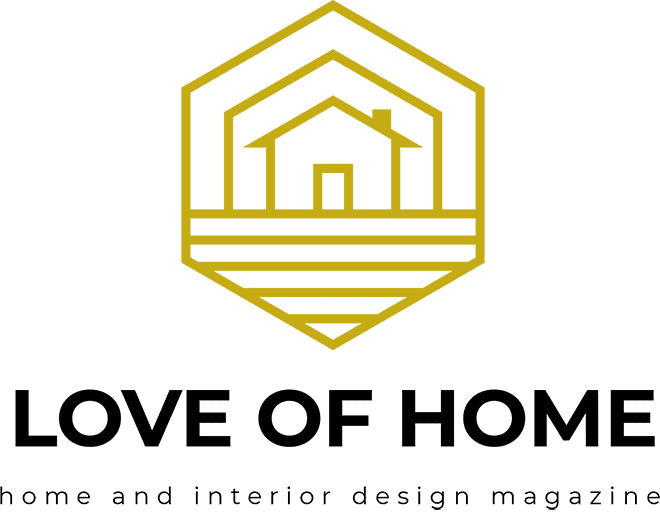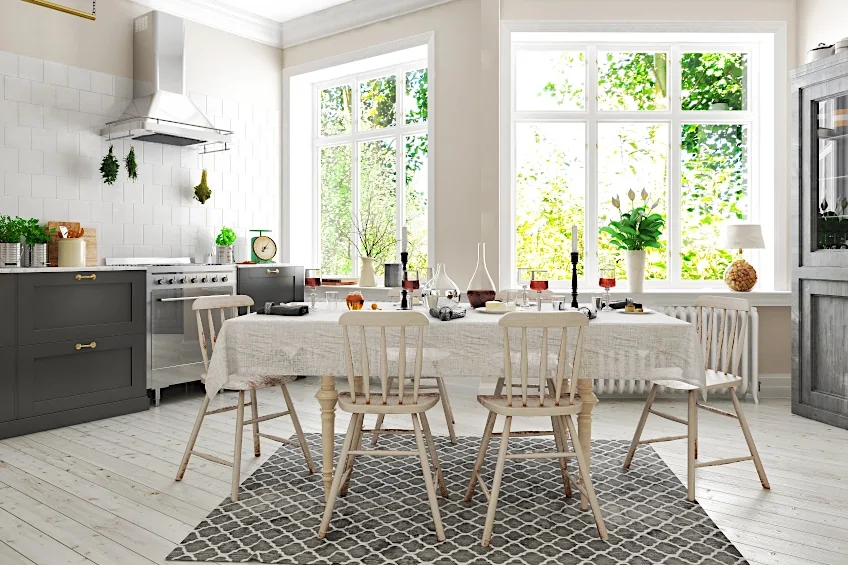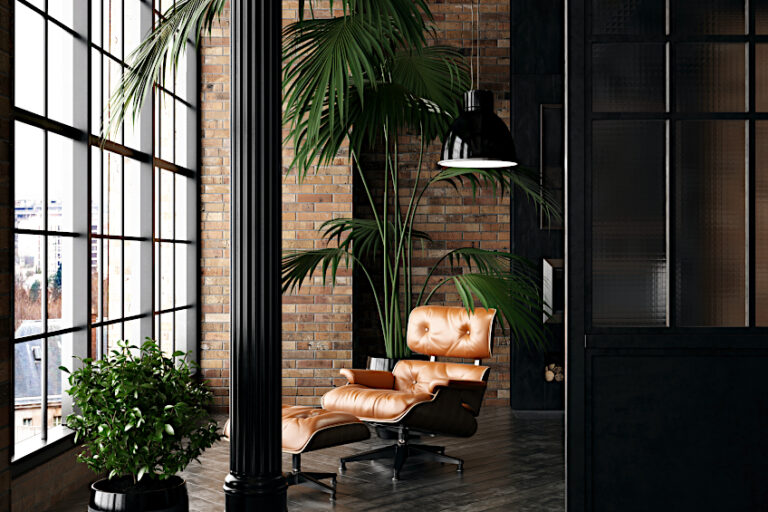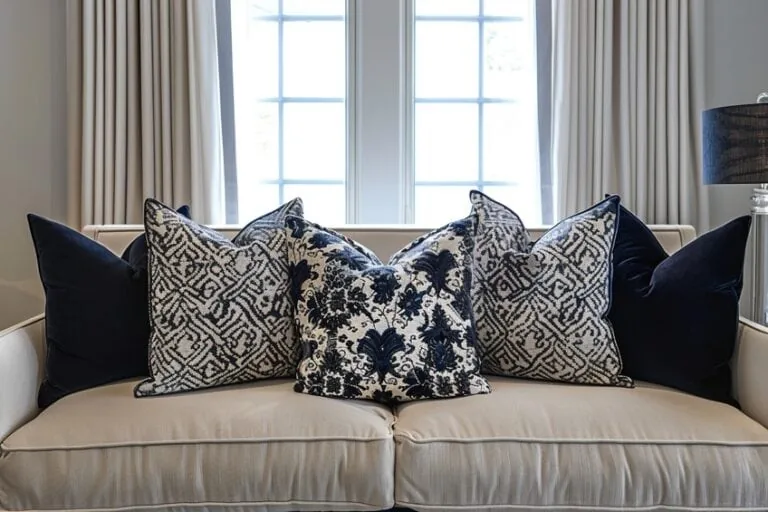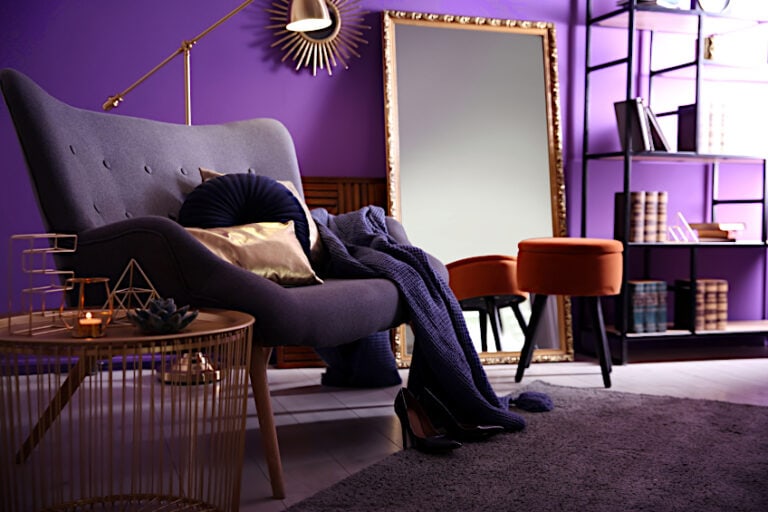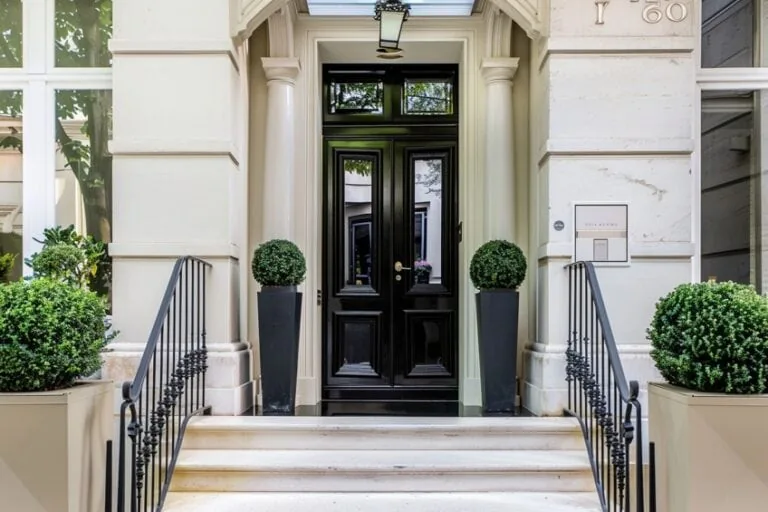Scandinavian Interior Design – The Core Features of Scandi Style
This post may contain affiliate links. We may earn a small commission from purchases made through them, at no additional cost to you.
Scandinavian interior design is a term frequently used by interior designers. It refers to an extremely popular design style that has been around since the 1930s and gained a lot of popularity during the 1950s. Terms like minimalism, freshness, light, and functionality come to mind when thinking of Scandinavian home design. Below, we are going to have a look at the origins of Scandinavian interior design and Nordic-style décor as well as key characteristics to help you decide whether this is the style for you.
Contents
As the name suggests, Scandinavian interior design originated in Scandinavian countries, which include Denmark, Norway, and Sweden. The greater Nordic countries of Finland and Iceland are also sometimes referenced in Scandinavian design.
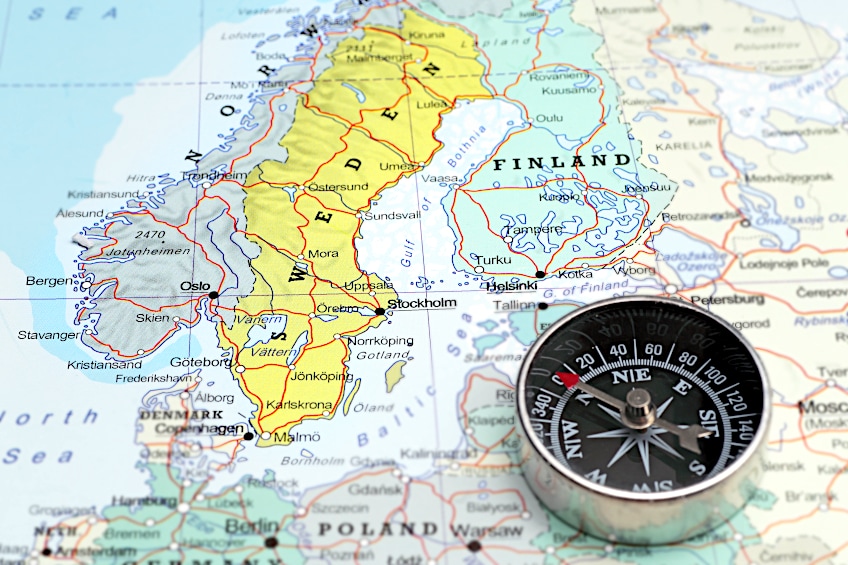
The philosophy of this design style is a direct result of the region’s natural resources and climate. Homemakers overcome icy nights throughout the lengthy winter months by optimizing their interiors to reflect as much light as possible. The Scandinavian style arose because of people’s inherent desire for bright, warm, and inviting environments.
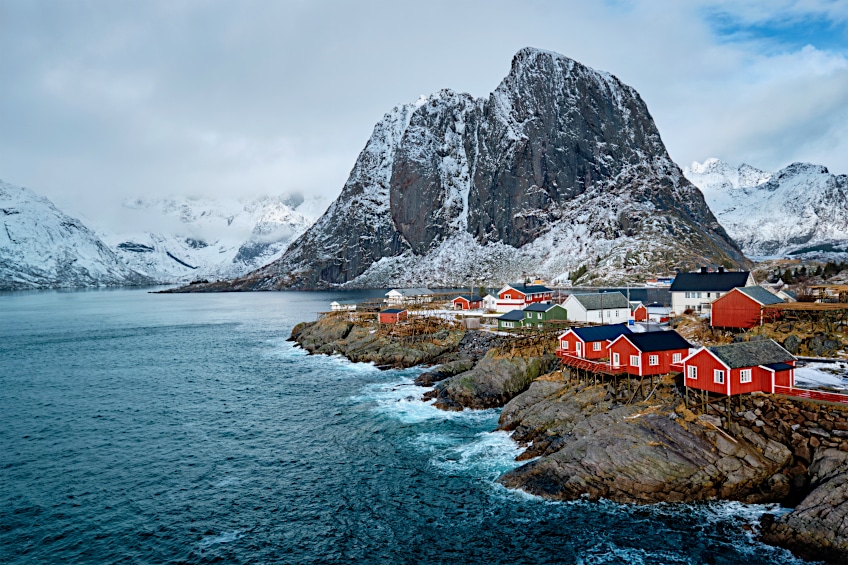
The Scandinavian design style emerged in the early 20th century, combining ancient and contemporary inspirations from Denmark, Sweden, Iceland, Finland, and Norway. Scandinavian design is influenced by both mid-century and modern design, which were both highly influenced by industrialization. However, because industrialization occurred later in Scandinavia than in the rest of Europe, the Scandinavian design style reflects both contemporary trends and traditional skills, resulting in an overall style that combines fresh design with time-honored features of workmanship.
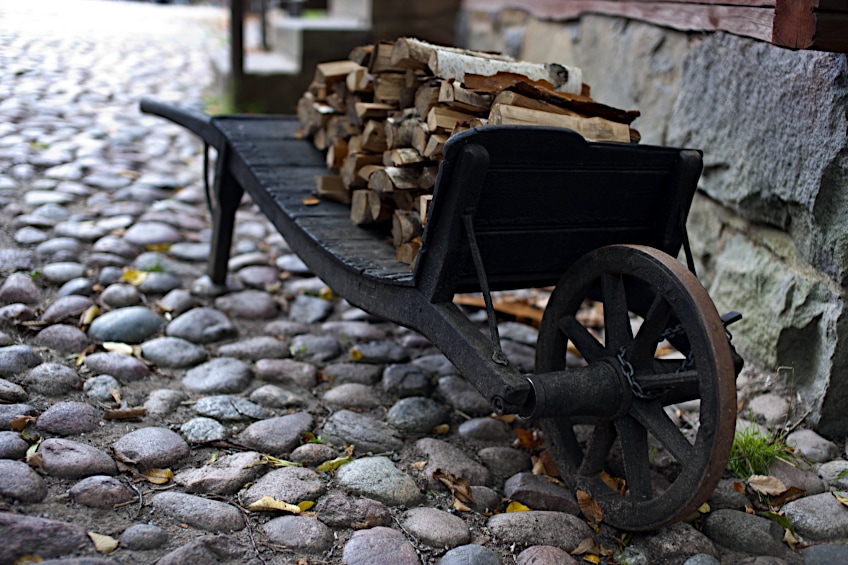
The style was and is simple and minimal, functional, accessible, and artisanal but affordable. At its core, Scandinavian home design focuses on simple yet effective methods to improve daily life, add design to the mundane, and make it more affordable. Alvar Aalto, Armi Ratia, Kaj Franck, Bruno Mathsson, Arne Jacobsen, Poul Henningsen, Hans Wegner, Borge Mogensen, and Verner Panton are some of the most well-known Finnish, Swedish, and Danish artists and furniture designers associated with this movement.
Some think that the design style is still as popular because we associate Scandinavian people with very happy people. This is actually a fact, confirmed by many studies. Clearly, they are doing something right for their quality of life to be so good that they are considered the happiest people on earth. And what better place to start imitating their quality of life by drawing inspiration from the spaces that they spend most of their time in?
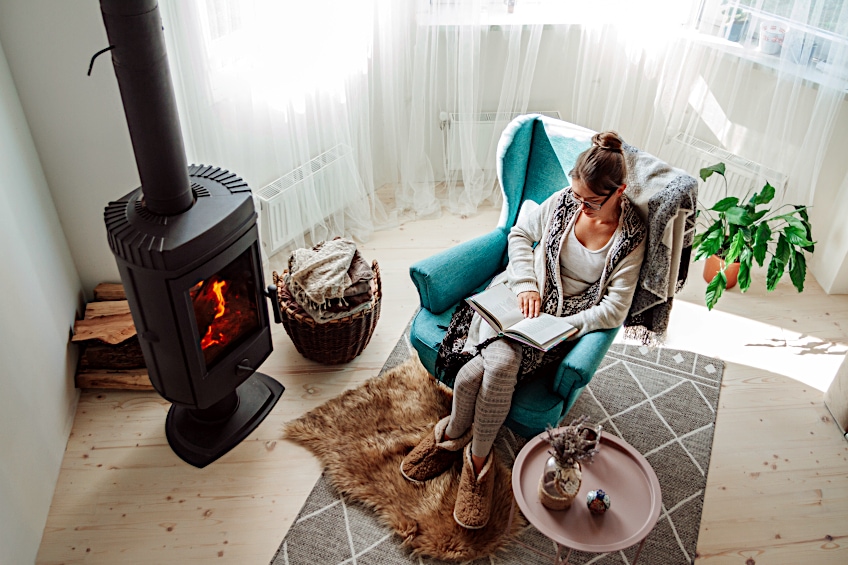
The United States and Canada picked up on the trendy Scandinavian décor styles during the 1950s. This had a great influence on the very popular Swedish furniture company, IKEA. IKEA is a great affordable alternative when designing with a Scandinavian décor style in mind. The accessibility and affordability of IKEA had a large role to play in the popularity of Scandinavian interior design. Scandinavian design is sometimes described as democratic design because it embraces the idea of making things that are both accessible and inexpensive to everyone.
This design style draws from both modernism and minimalism while embracing comfort, with a significant focus on functionality. The goal of the Scandinavian design style is to help people live more sustainably and in harmony with one another. As with all design styles, Scandinavian interior design comes with a certain set of principles that need to be followed for it to be considered true Scandinavian design.
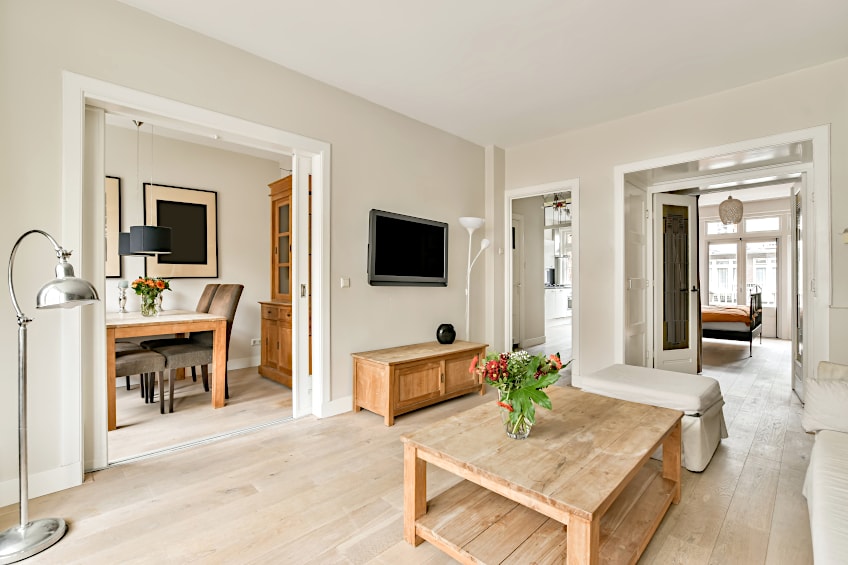
Minimalism
Minimalism is an entire design style on its own that is a very popular trend at the moment in the world of design. A minimalistic approach is probably the singular most important design principle in Scandinavian interior design. The reason for this is that it is impossible to achieve the core principles of Scandinavian home design which are airy, light, and functional, with a cluttered space.
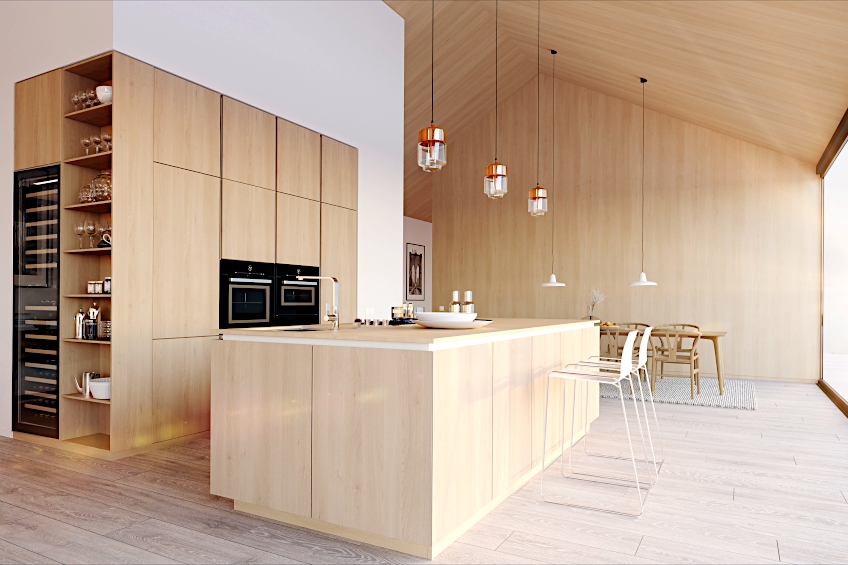
Minimizing doesn’t mean throwing out everything and only living with the bare essentials, but rather putting thought into the things that you consume, which has a different meaning for everyone. For one person it might mean that they need to assess the quality of the items that they consume more carefully for them to last longer, and for others, this might mean assessing the functionality of new items.
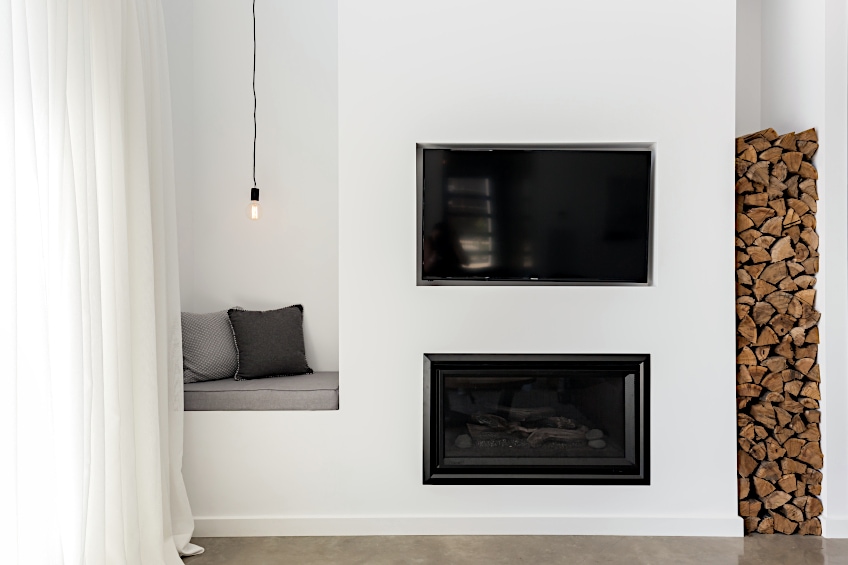
A minimalistic approach is also very much a visual principle, meaning that overwhelming textures, patterns, and colors tend to be visually cluttered, even if you have very few items in your home. Stick to minimalistic neutrals and stray clear of bold patterns and textures. Another way to achieve a minimalistic look is to focus less on decoration, and more on function. The Scandinavian décor style is very minimal, and they tend to rather make use of functional and beautiful furniture pieces that serve as décor as well.
Good Quality
Scandinavian interior design is anything but substandard quality. We see this in the materials used, such as steel and wood. The wood is usually light-colored plywood which is quite an expensive finish compared to most man-made timber boards. Scandinavian interiors exude superior quality and craftsmanship, which is also an ode to the roots of this interior design style.
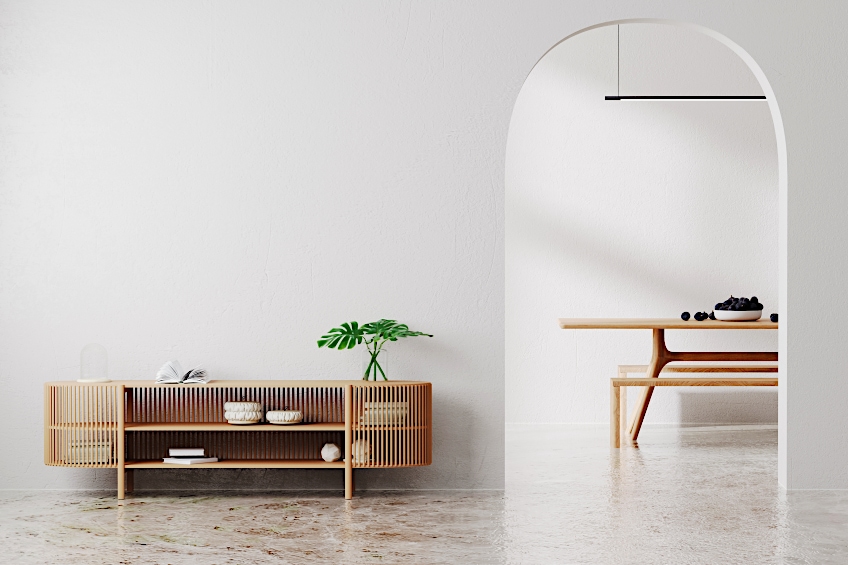
Furniture, light fixtures, and other essential objects in a Scandinavian home should be modern and appealing, but not overly extravagant. When products are well-made, they can be transformed into decorative elements in their own right. Look for everyday goods and storage to use as décor pieces. Storage units, shoe racks, shelving, and dressers can all serve as practical as well as decorative elements.
Nature
It goes without saying that this characteristic comes from the beautiful surroundings of Scandinavian or Nordic countries. The concept of bringing the outside in is very popular in Scandinavian design. This is done by incorporating natural and real plants and flowers throughout the interior. Not necessarily small plants, as they can make an interior look cluttered, but rather large house plants like monsteria and fiddle leaf fig trees are very popular. Too much of a good thing is almost always a bad thing. Scandinavians have a knack for not overdoing it with their houseplants. They use it as a decorative feature, but still minimally. As a rule, they usually stick to three to four large plants per room.
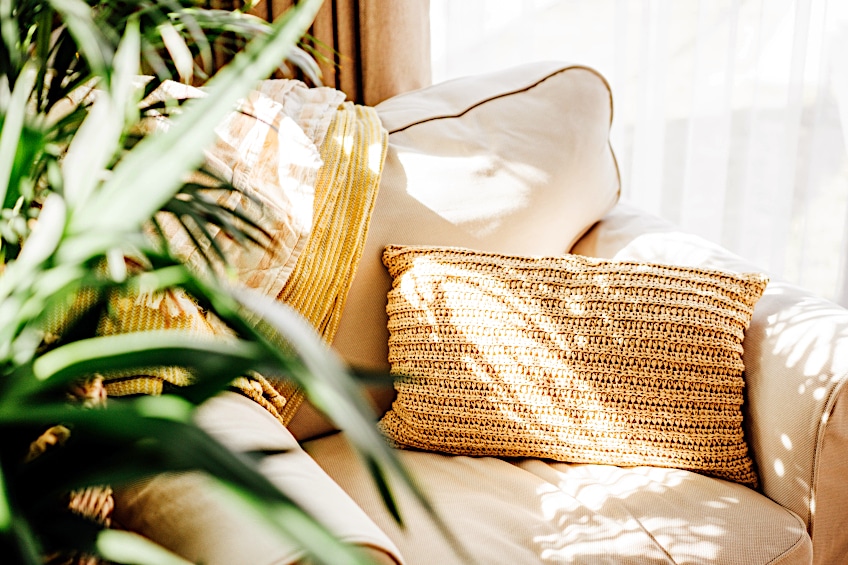
Emphasis is placed on a good quality of life, and this means exposure to nature in the safest way possible. Because of their love of nature, Scandinavians also have a passion for sustainability and try to be as eco-friendly within their home as possible. This is achieved through the use of reclaimed wood and making use of other sustainable materials in the interior design process.
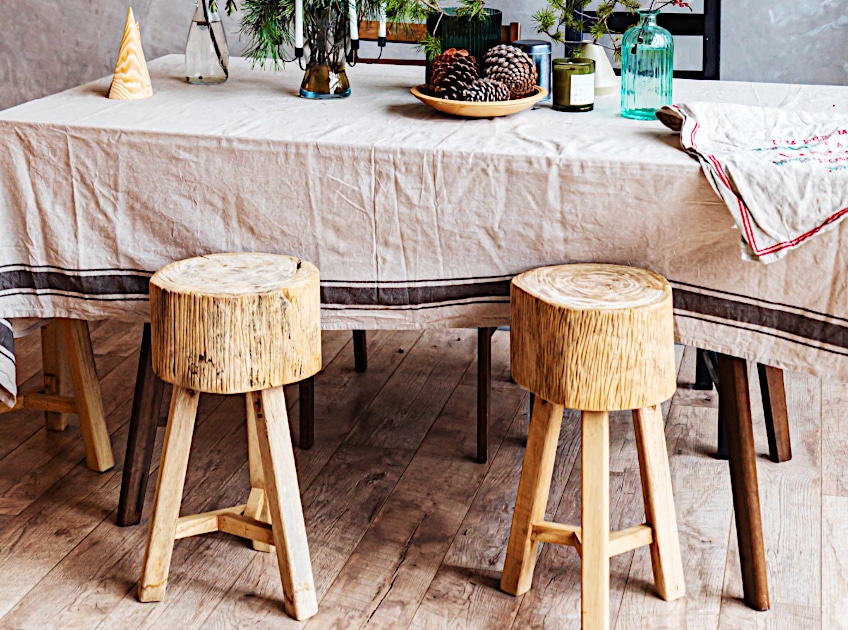
Emphasizing nature, natural materials are used in abundance in Scandinavian design. These materials include wood, steel, wool, leather, and so forth. The wood used is specifically a beach blonde wood rather than a dark walnut look. Making use of natural materials is also another way of emphasizing the concept of bringing the outside in. Because of this very important characteristic, it is best to stay clear of materials such as plastic. Nature is also incorporated through the use of artwork. Whether it’s a line painting or an abstract watercolor, Scandinavian wall art typically features or references nature or the human figure.
Form and Function
The well-known expression “form follows function,” invented by architect Louis Sullivan, represents the idea that the shape of a structure or object should be closely tied to its intended purpose. This principle guided modernist architecture and industrial design throughout the twentieth century, including Scandinavian design.
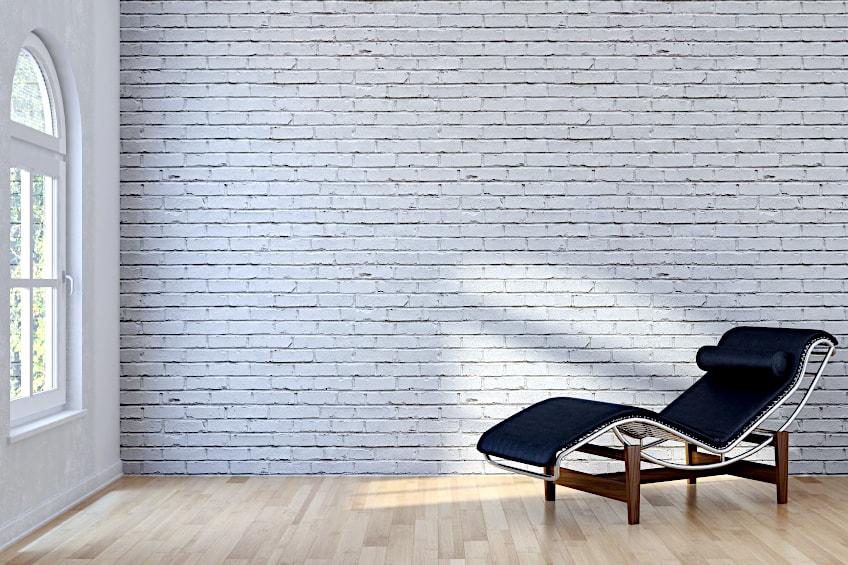
Scandinavian design is very focused on human-centered design. Here, again, we see characteristics of modernism, where form following the function of an object, or space is crucial. This means that the furniture pieces are very simplistic, and not decorative in any sense. The reason for this is the limited resources that Nordic people had access to create their furniture pieces because it was not possible to travel very far in winter to fetch alternative resources. They learned to use what they already had in their procession, and essentially this is how Nordic-style décor came into existence.
Neutrals
Scandinavian design tends to make use of only neutral color palettes that can be found in nature. Modern interpretations have started incorporating light, pastel pops of color, but this is not true to the original Scandinavian design. Light neutral colors such as beige, light browns, creams, and white are very popular in Scandinavian interiors, as they emphasize the light and airy feeling that is the goal of the Scandinavian style. Colors that are known to be Scandinavian style include:
| Shade | Hex Code | CMYK Color Code (%) | RGB Color Code | Color |
| White | #FFFFFF | 0, 0, 0, 0 | 255, 255, 255 | |
| Black | #000000 | 0, 0, 0, 100 | 0, 0, 0 | |
| Sage Green | #BCB88A | 0, 2, 27, 26 | 188, 184, 138 | |
| Off-White | #F5F5F5 | 0, 0, 0, 4 | 245, 245, 245, 96 | |
| Pale Wood | #ECD5A7 | 0, 10, 29, 7 | 236, 213, 167 | |
| Taupe | #C0B5AB | 0, 6, 11, 25 | 192, 181, 171 | |
| Tan | #D2B48C | 0, 14, 33, 18 | 210, 180, 140 |
Contrast
Recently, black powder-coated steel has been introduced as part of Scandinavian interior design. This stark contrast to the light, natural color palette has a way of balancing out the interior, making it a bit more contemporary and pulling the entire space together beautifully. It is important to note that black is used very minimally, only in artwork, mirror frames, small furniture pieces, and such. Black is never used as the backdrop on a large scale, like painting an entire wall black.
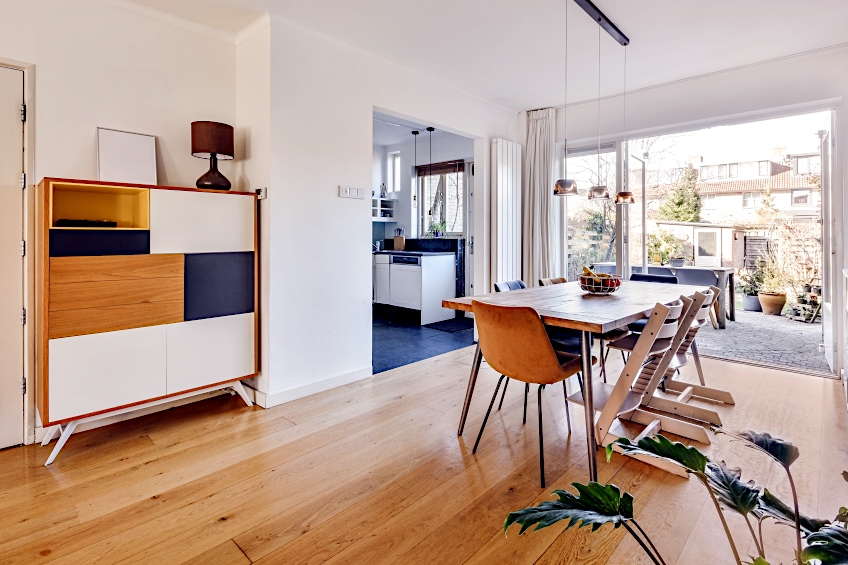
Designers have also started incorporating contrast through the use of very modern furniture pieces or materials like plastic, against natural materials such as wood and leather. Essentially, mixing the old with the new. An example of this is mid-century modern furniture used in Scandinavian interiors. New modern furniture designs and interior finishes can be seen in many interiors in places like Copenhagen and Stockholm where the buildings are hundreds of years old. The stark contrast of the ornate and historic building interiors against modern furniture pieces creates a great visual balance in the spaces.
Natural Lighting
Bright light is essential when it comes to Scandinavian interior design. This goes for synthetic and natural lighting. Scandinavia has an abundance of sunlight during summer, but in turn, has only a few hours of sunlight during the winter. Scandinavian homes are designed with this in mind, knowing that they need to maximize the amount of natural lighting entering the home, especially for those cold winter months. This is done by incorporating large, triple-glazed windows and bright white walls. Skylights are also a popular design element in Scandinavian interiors, for this reason.
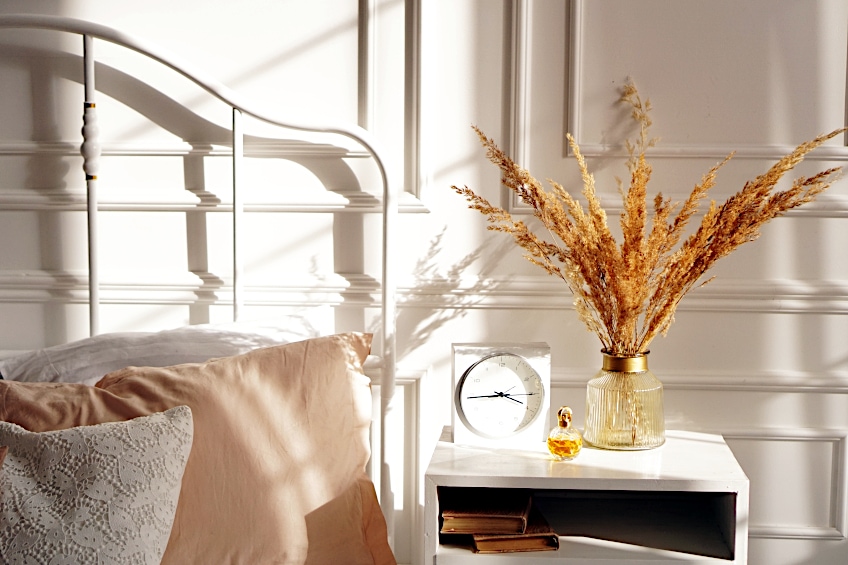
Natural light may not always be possible in an interior, but it can easily be made up for with artificial and ambient lighting. Make sure to add ambient light wherever there is a very dark spot in the interior, and make sure to use warm-toned lighting instead of cool tones.
Statement Lighting
Because the Scandinavian décor style is so minimal, practical items, like lighting, tend to take on an ornamental quality. Pendant lights that look like lanterns are made of linen, paper, or wicker are very popular. However, the latest Scandinavian decor style ideas include very interesting and bright contemporary lighting designs.
Hygge
Hygge is a Danish and Norwegian word that means comfort and warmth. The word in itself is a description of Scandinavian interior design, as the main goal is to achieve a perfectly balanced level of comfort while focusing entirely on people’s well-being. Wood-burning stoves and fireplaces are very popular, and they’re a great way to bring coziness and warmth to a Scandinavian-style home.
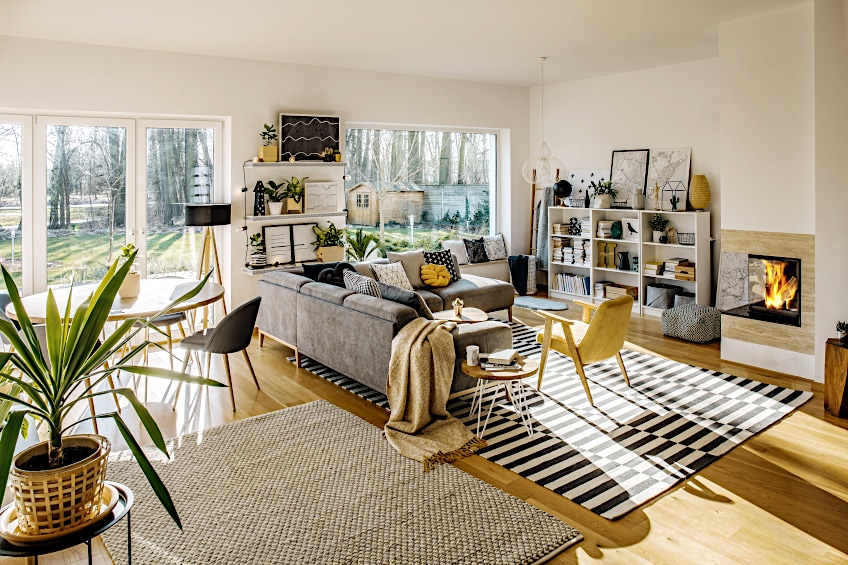
Psychological warmth or well-being should also be addressed when designing a Scandinavian-inspired interior. This is done by making use of the correct hue of lighting, like warm lighting instead of neon or cold lighting, layering rugs, cushions, candles, and so on.
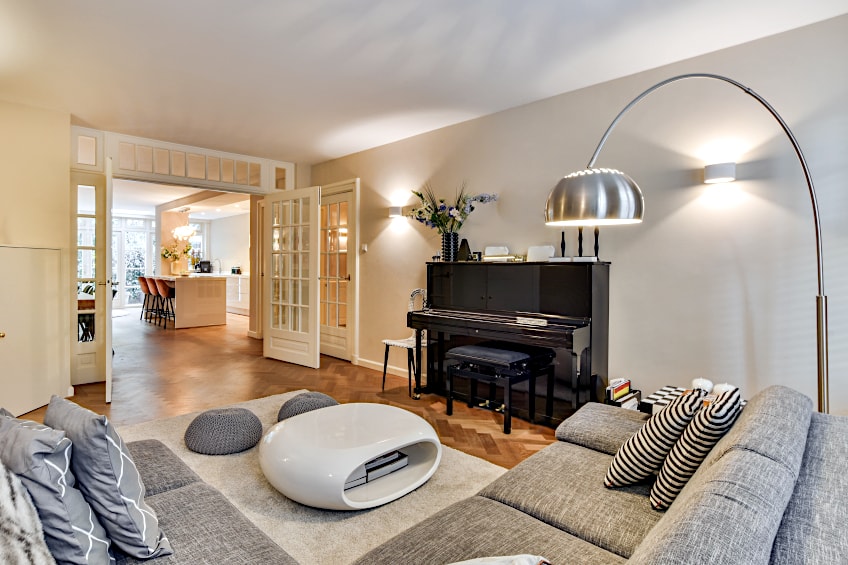
When considering the layout of your rooms, try to include pockets of relaxation, such as comfortable chairs for reading or sipping tea. Remember that comfort is key when designing these relaxation areas, and adding soft items like blankets, covers and other soft textiles and items will emphasize the comfort in the home.
Soft Textiles
Soft textiles are one of the ways in which warmth and comfort is introduced in Scandinavian interiors. Scandinavian countries can experience subzero conditions, necessitating the use of warm materials such as wool or mohair blankets. Warming blankets and rugs not only bring warmth to a room, but they help soften the sometimes-harsh aesthetic of a Scandinavian design. Shiny fabrics like satins and silks are rarely found in Scandinavian designs.
Although Scandinavian design is a design style made up of a group of different countries, each of these countries has its own unique influence and aesthetic that they contributed to Scandinavian interior design, and these are worth mentioning:
Norwegian Design
Norway is known for literally being in the dark most of the time, and because of this Norwegians have mastered the use of light and pale colors in their homes to create a serene and light atmosphere even on the darkest of days. Norwegians are not as style-conscious as Scandinavians. They focus more heavily on minimalism, clean lines, and functionality than aesthetics.
Swedish Design
Being known for its very long winters, Swedish interiors also make good use of light colors on their walls and floors and furniture that reflect natural light. Swedish design has a lot more color incorporated into its interiors than what Scandinavian design is known for. This style prefers the use of pops of color such as greens, pinks, yellows, and grays. In certain areas, bright colors such as purple, gold, and red are even incorporated. Designers also love to introduce furniture with subtle curves, contrasting the straight lines of Scandinavian design.
Danish Design
Danes are solely responsible for the incorporation of hygge in Scandinavian interior design, which is a huge contributing factor. Denmark is also known for its innovation through new manufacturing technology, which they then combine with functionality and simplicity in their furniture and décor. Danish design has strong modern influences, as they fully embrace the design ethos of Bauhaus, celebrating their use of local materials and prioritizing functionality above all else.
- No wall-to-wall carpets – only loose or layered rugs
- Mid-century modern furniture
- Corner fireplaces
- Furniture is usually elevated off the ground, which improves light circulation
- Walls are always white
- Paper lampshades are very popular
- Furniture is not placed on top of each other
- Same flooring throughout the entire home
- Bare or minimal window treatments
- Monochromatic gallery walls
Being an interior design style that has been around for quite some time, Scandinavian design evolved and merged with other styles throughout the years. These merged styles are important to make note of and assess the elements that differentiate these styles from original Scandinavian interior design.
Modernism and Scandinavian design have been merged for a very long time. This merge was inevitable, as both of these styles came from the same design era and they have very similar characteristics. Straight lines, drawing inspiration from nature, and making use of natural materials, are all characteristics used by both of these movements. Hygge is the one element that creates a large divide between the two, as Modernism tends to be very cold and hard, where Scandinavian design is very light and cozy.
Scandi-Industrial
The industrial style is also the polar opposite of Scandinavian style. The exposed beams and raw concrete surfaces are a stark contrast to the softness and warmness of Scandi. This being said, one of the characteristics of Scandinavian interior design is contrast, and nothing contrasts Scandinavian interior design more like industrial interior design. These opposing elements create a sense of balance and harmony when combined.
Boho-Scandi
Bohemian and Scandi are a very natural match. Bohemian being very soft, casual, and inviting is a great addition to the hygge of Scandinavian interior design. Boho-Scandi is achieved through lots of layers of soft textiles, rugs, and cushions. Bohemian design is also known for mostly neutral colors, which makes it an effortless pairing for Scandinavian interiors. The main difference between Boho and Scandi is probably the excess of objects and décor. The layering aspect of Boho encourages accumulation rather than function.
The principles of Scandinavian interior design and décor are here to stay, and luckily, you don’t have to be of Nordic descent to incorporate these design elements into your own home. Scandinavian interior design and Nordic-style décor will most likely merge with even more design styles in the future, and we are looking forward to discovering and sharing them.
Frequently Asked Questions
Scandinavian-style interior design is a design style that reflects the homes of the Nordic people, who live a very simple life by favoring function over form. To achieve a sleek, modern aesthetic, Scandinavian-style interiors make use of a combination of forgiving hues, textures, and contrast. The design also reflects the Lagom way of life. The notion of hygge, which comprises generating a comfortable, warm, and balanced atmosphere in a space, is emphasized in this Swedish principle.
In essence, Iceland, Norway, Sweden, Finland, and Denmark are all Nordic countries with Scandinavian roots, yet most individuals identify as Scandinavian only when they are Danish, Norwegian, or Swedish. It is thus safe to say that both of these terms can be used interchangeably, meaning the exact same thing.
The fundamental distinction between the two is in the materials used. Metals like steel and concrete are used in modernism, whilst wood and weaving, and softer textures are used in Scandinavian design.
Gray, blue, black, and cream are the most popular hues in Scandinavian furniture. In Scandinavia, the hues are natural and have become a signature. Scandinavian design, particularly in terms of color, has become more adaptive as a result of the use of different hues.
